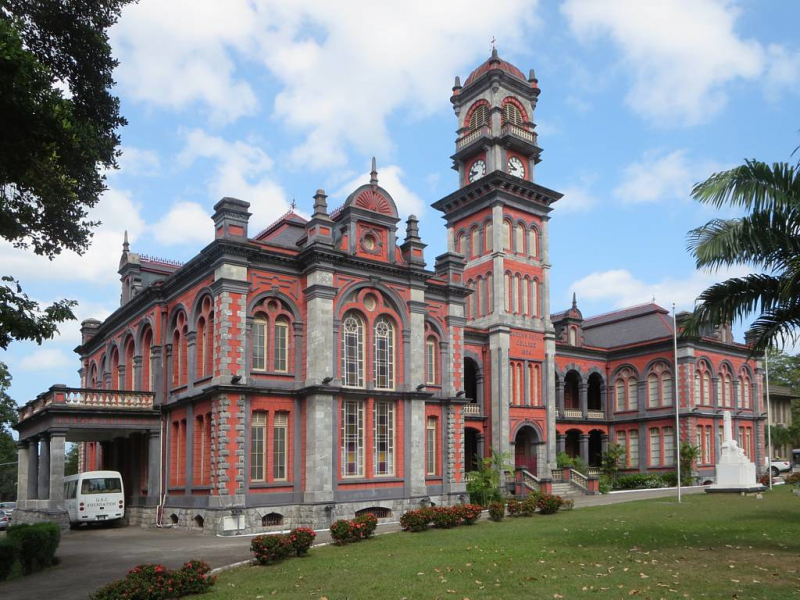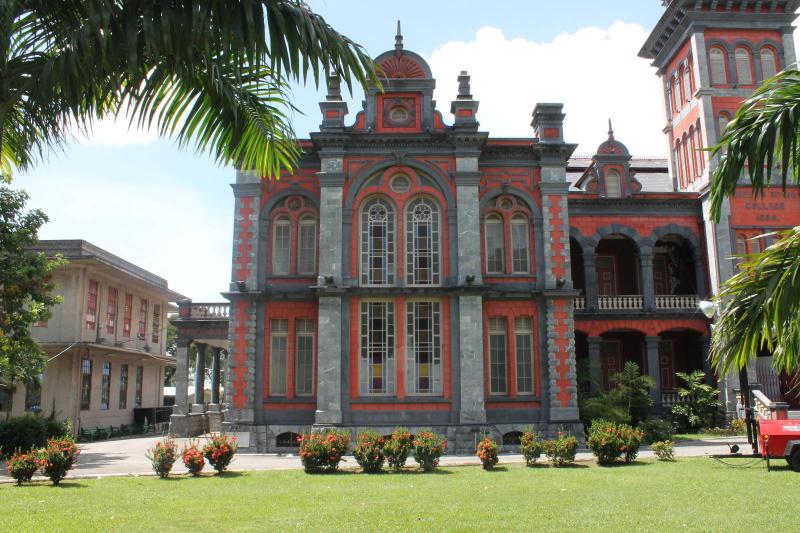Queen's Royal College
Queen's Royal College, also known as QRC or "The College" by alumni, is one of Trinidad and Tobago's most prominent and oldest secondary institutions. The college is known for its unique German Renaissance architecture as well as its consistently outstanding academic results. The main structure is one of the Magnificent Seven, a collection of historic structures constructed in the early 1900s. During the late 1930s, the North and South buildings, known as North Block and Science Block, were constructed. The West Block was built later, and every student, past and present, will remember the block's contentious "painting pink." The school has its own pavilion and canteen, both of which are positioned on the edge of its field and are utilized for various sports during the year.
Courtney Knollys, the acting Governor at the time, lay the foundation stone on November 11, 1902. During the time when Queen's Royal College was housed in the Princess Building, Daniel M. Hahn, Chief Draughtsman of the Public Works Department, and an Old Boy of Queen's Royal College, built the edifice. The building's architecture is German Renaissance in style, as seen by its substantial aspect. The original structure, which cost 15000 British pounds (1,845,000.00 British pounds adjusted for inflation), could house six classes of 30 boys each. The lecture hall could accommodate about 500 people at a time. Despite the plan's German origins, maybe a relic of Mr. Hahn's Berlin student days, the interior design is tropical with an aristocratic touch from the days when European school architecture was austere.
Location: Port of Spain, Trinidad











